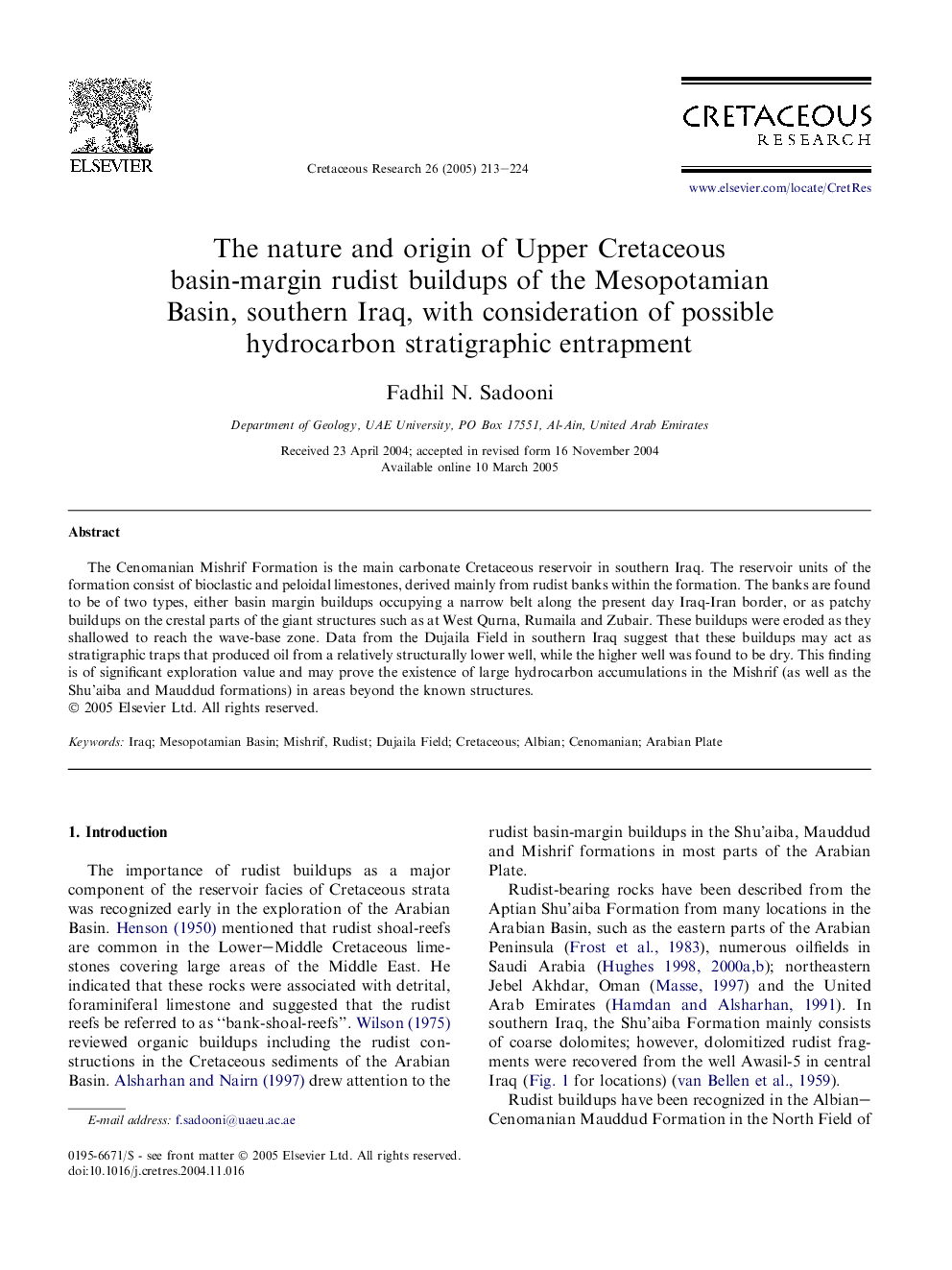| Article ID | Journal | Published Year | Pages | File Type |
|---|---|---|---|---|
| 9538948 | Cretaceous Research | 2005 | 12 Pages |
Abstract
The Cenomanian Mishrif Formation is the main carbonate Cretaceous reservoir in southern Iraq. The reservoir units of the formation consist of bioclastic and peloidal limestones, derived mainly from rudist banks within the formation. The banks are found to be of two types, either basin margin buildups occupying a narrow belt along the present day Iraq-Iran border, or as patchy buildups on the crestal parts of the giant structures such as at West Qurna, Rumaila and Zubair. These buildups were eroded as they shallowed to reach the wave-base zone. Data from the Dujaila Field in southern Iraq suggest that these buildups may act as stratigraphic traps that produced oil from a relatively structurally lower well, while the higher well was found to be dry. This finding is of significant exploration value and may prove the existence of large hydrocarbon accumulations in the Mishrif (as well as the Shu'aiba and Mauddud formations) in areas beyond the known structures.
Related Topics
Physical Sciences and Engineering
Earth and Planetary Sciences
Palaeontology
Authors
Fadhil N. Sadooni,
